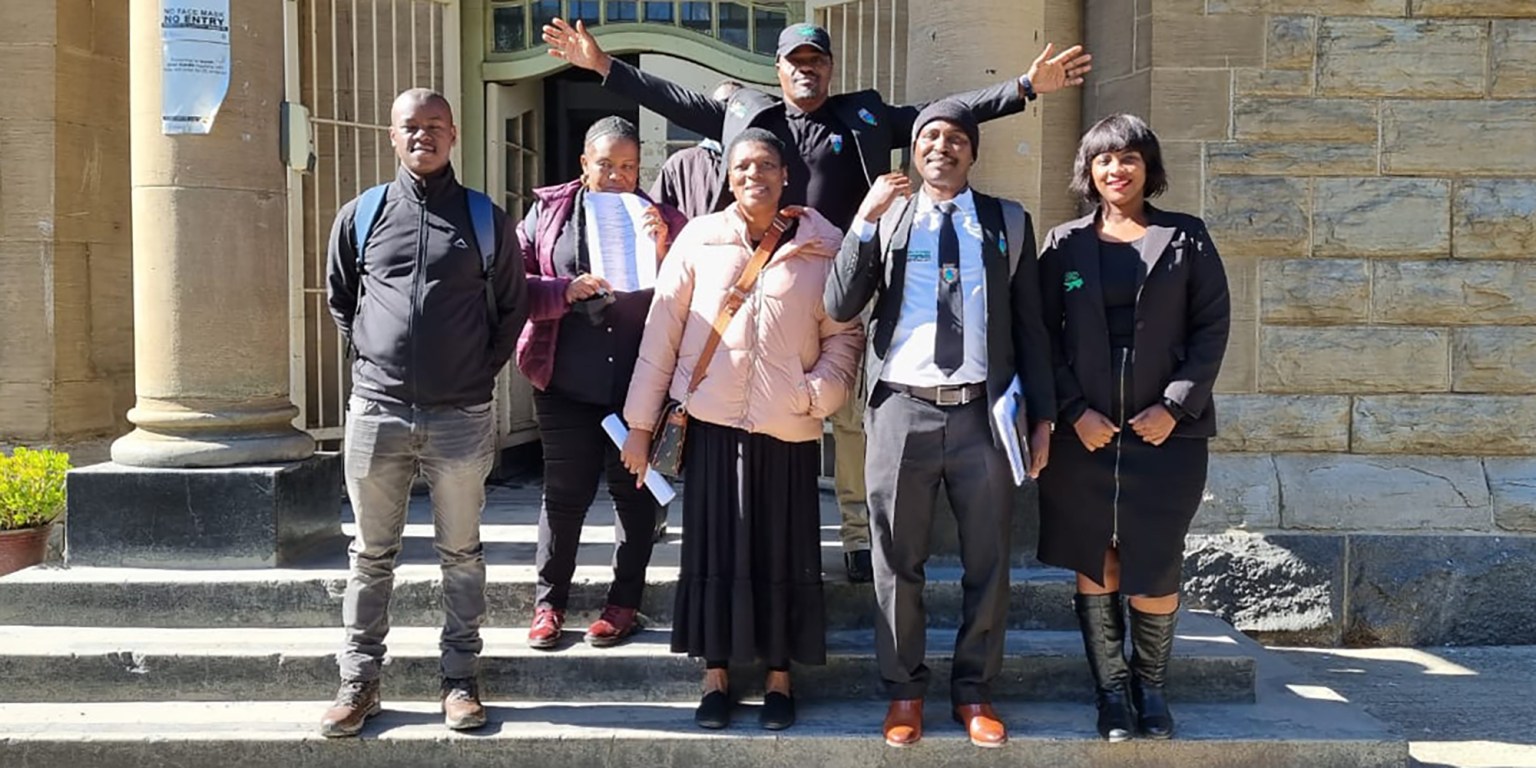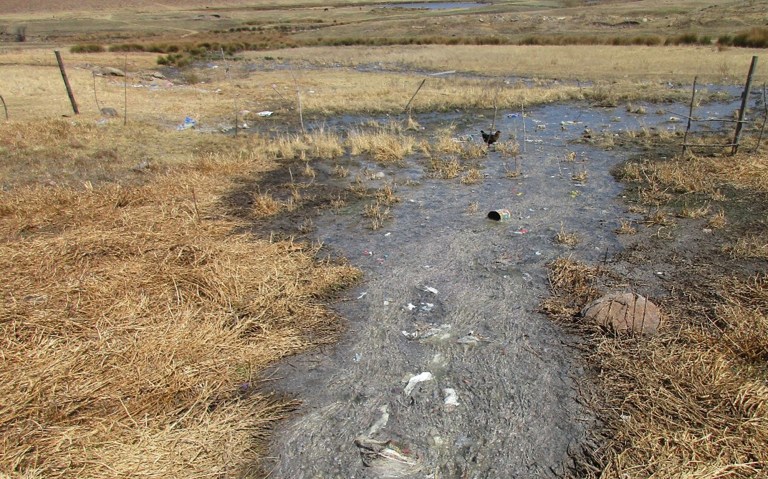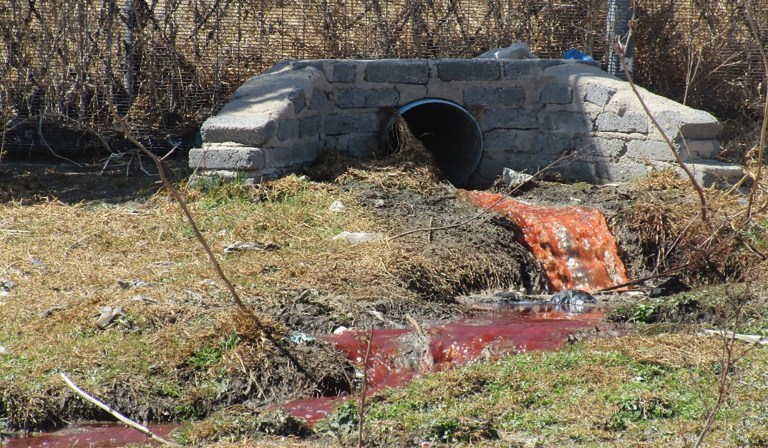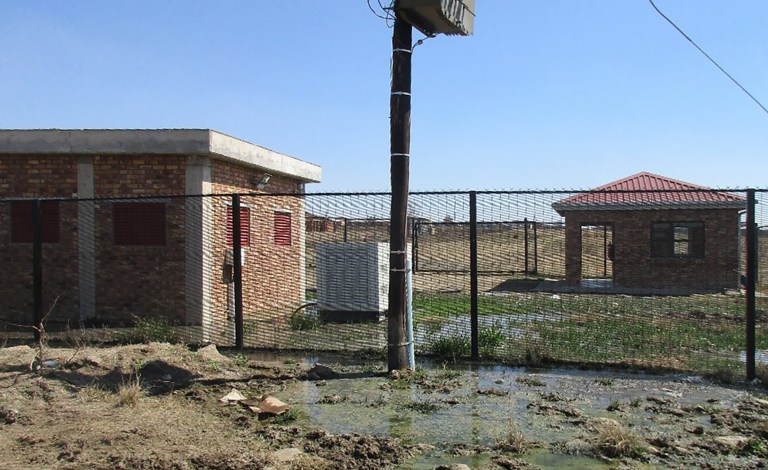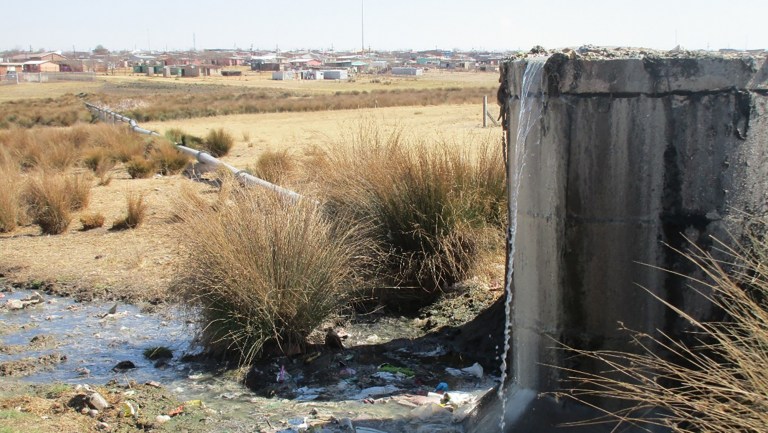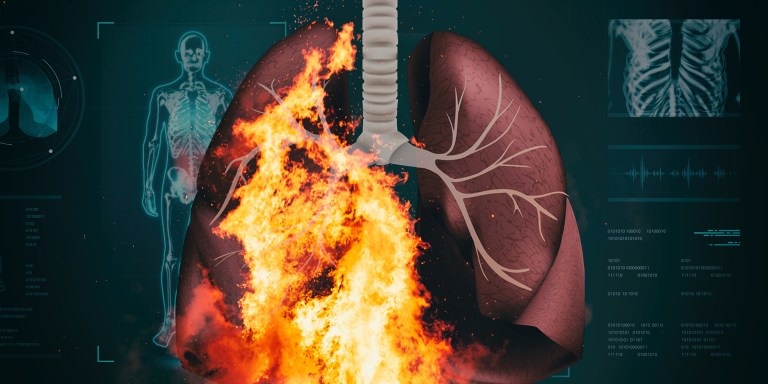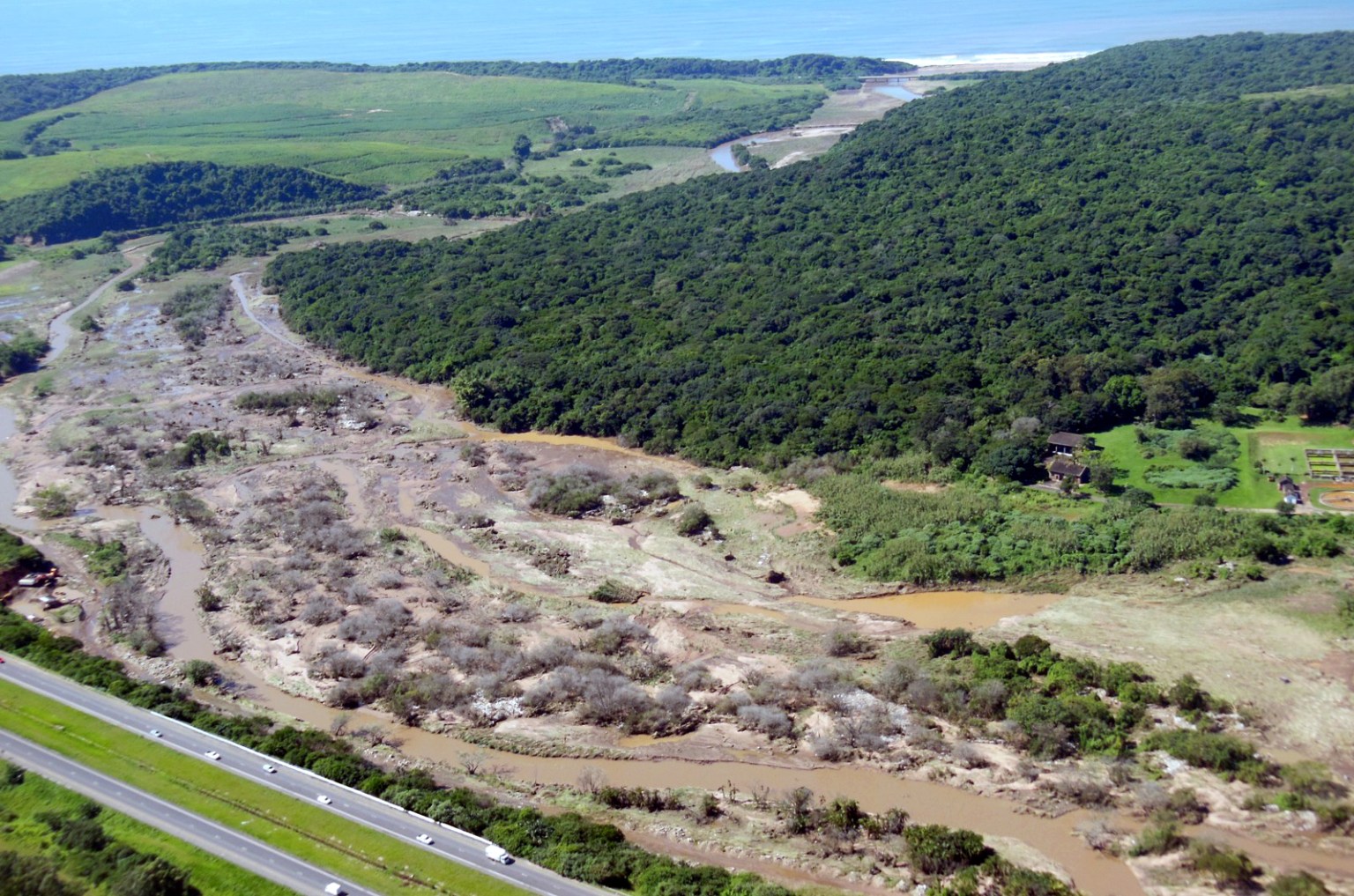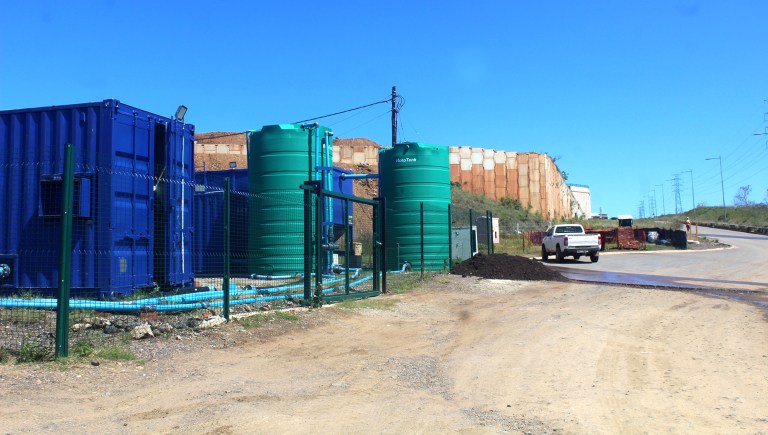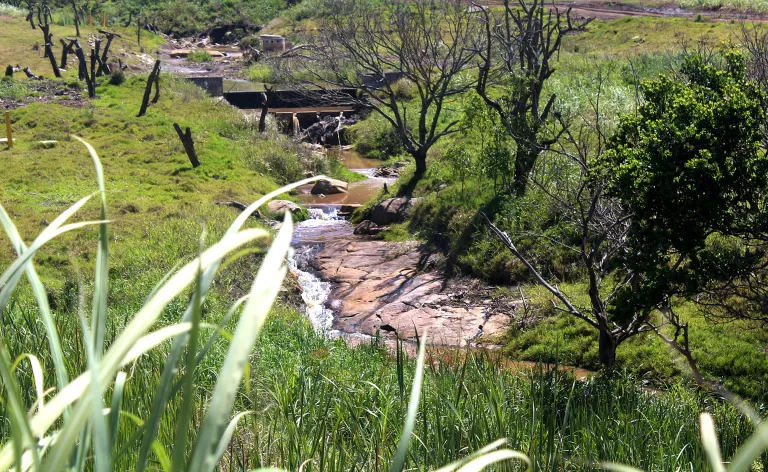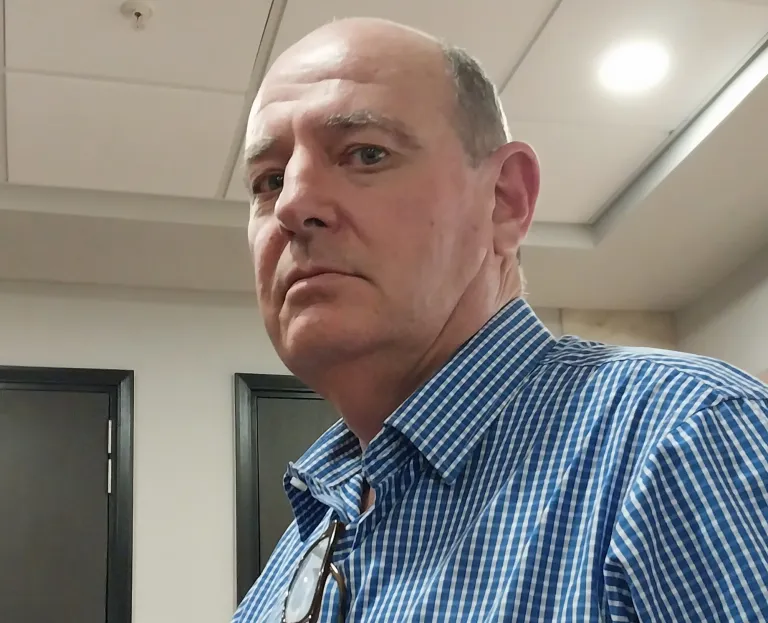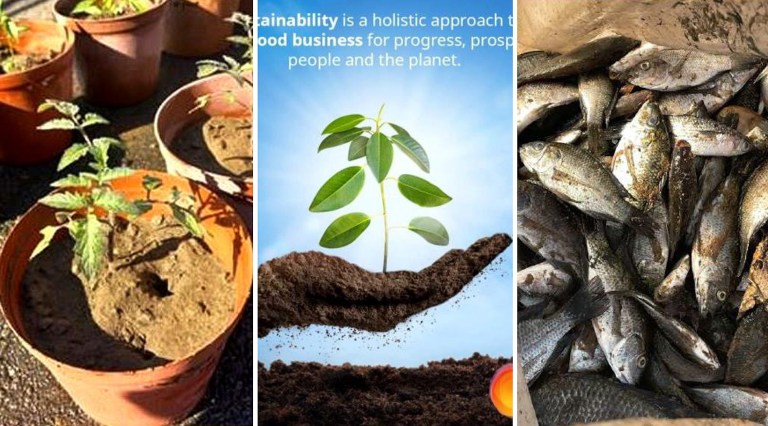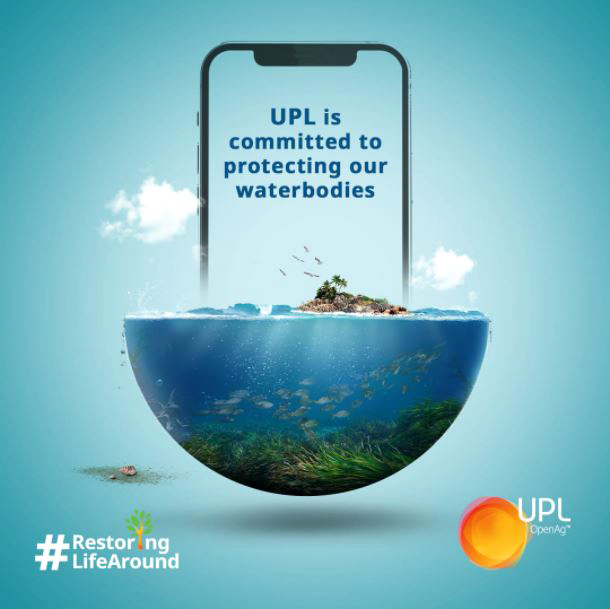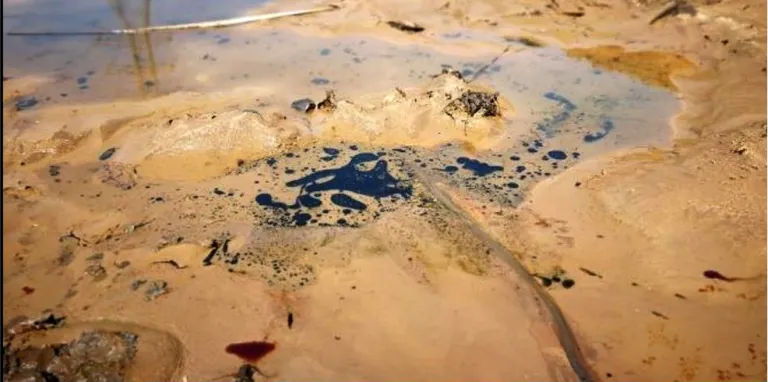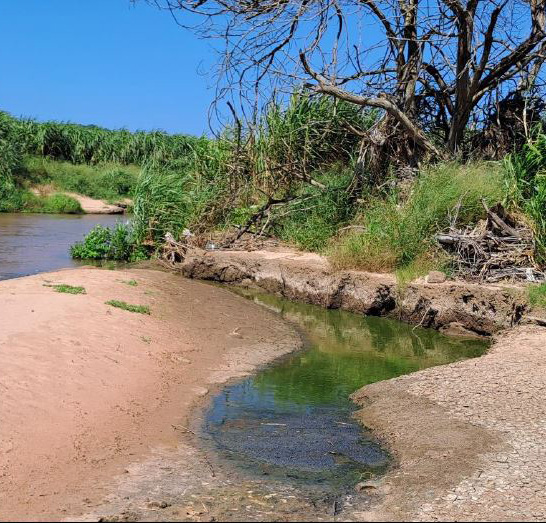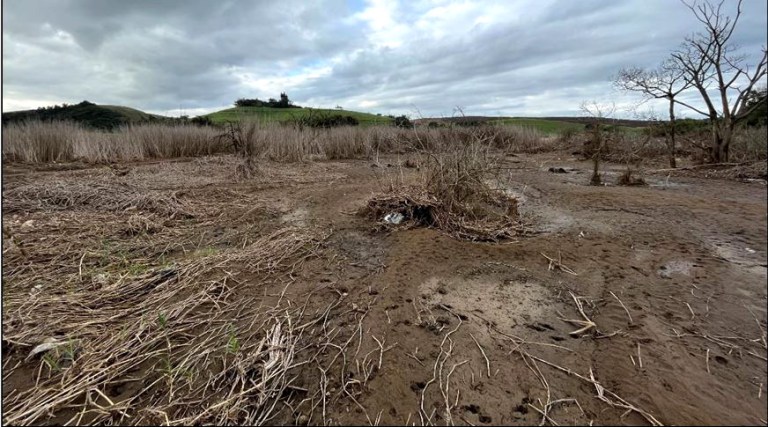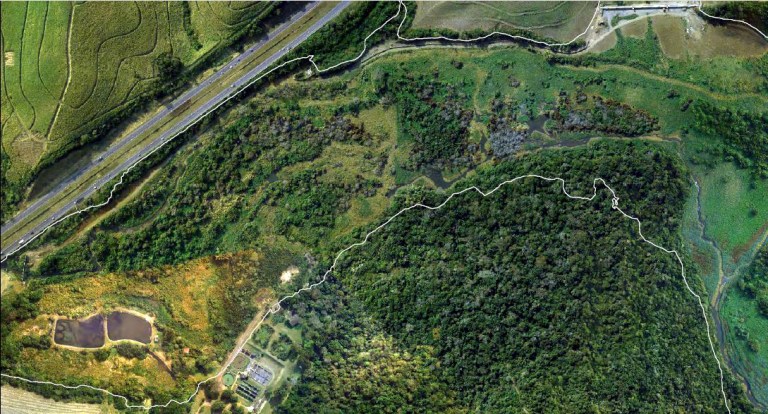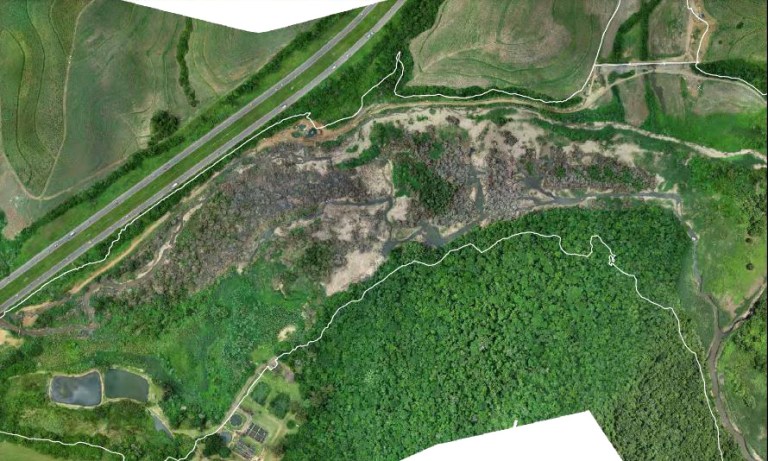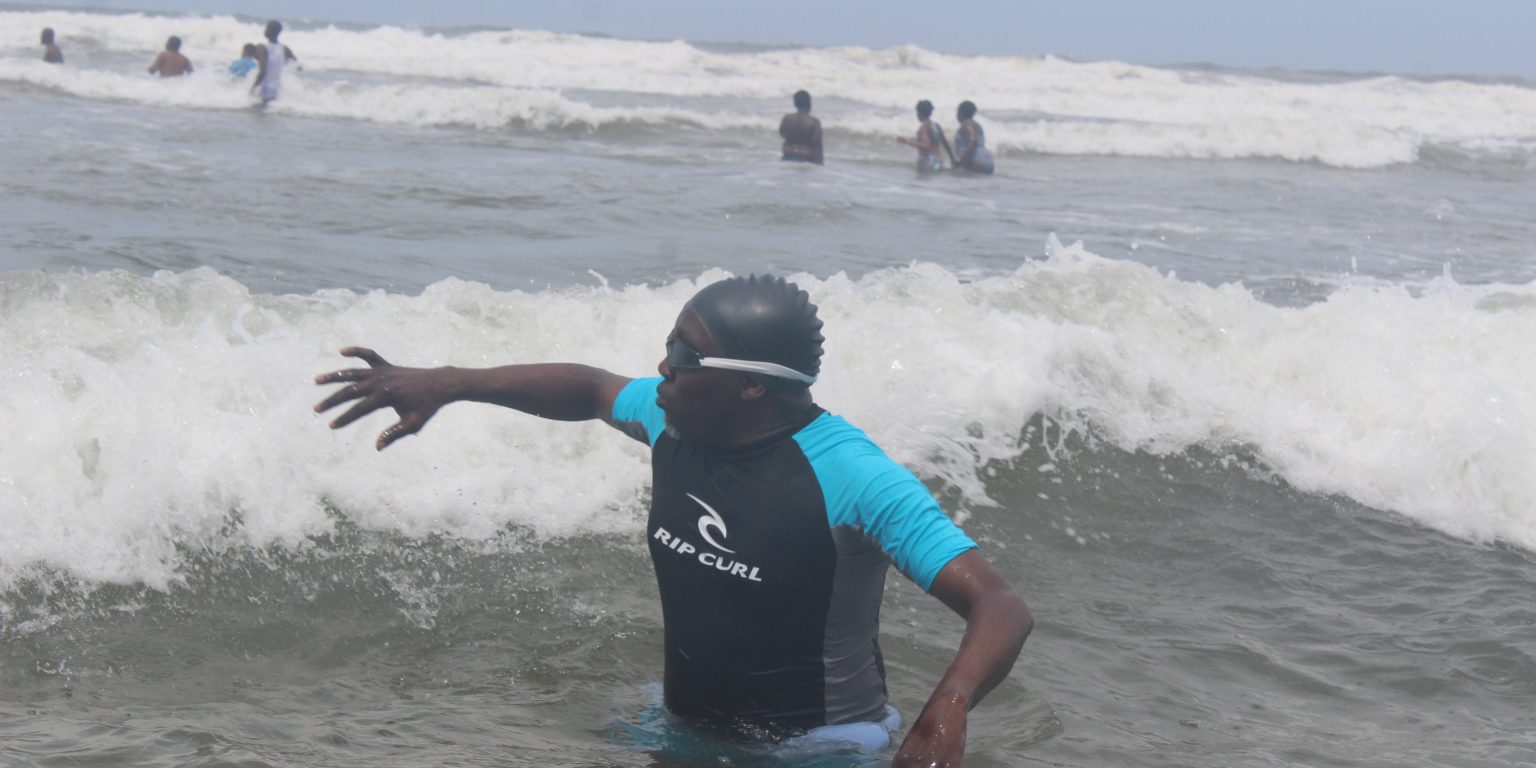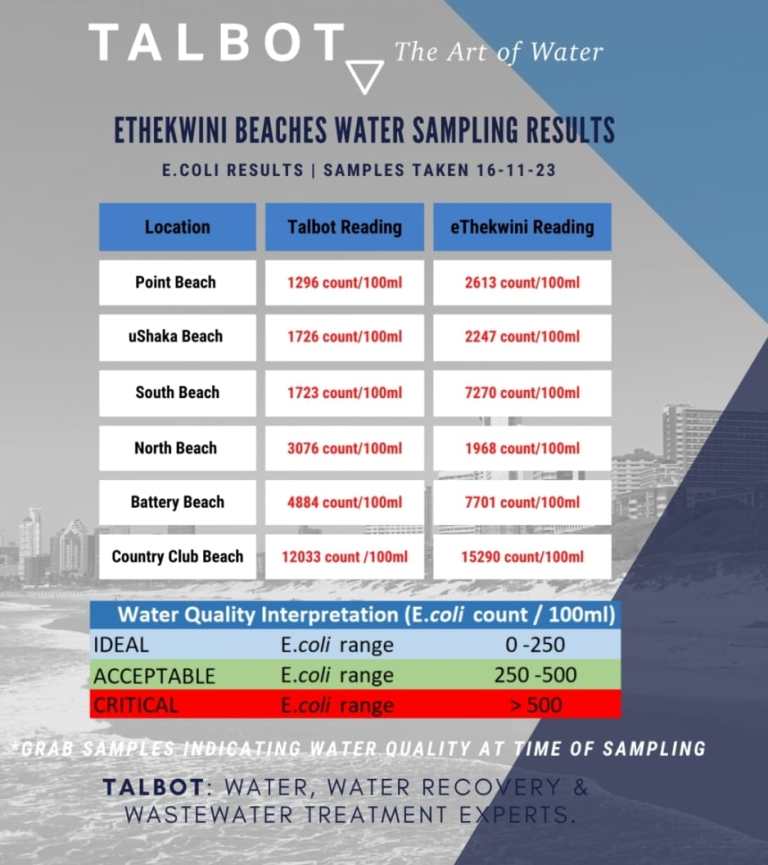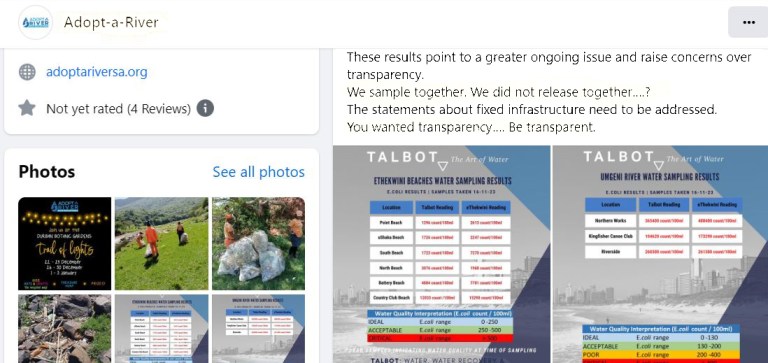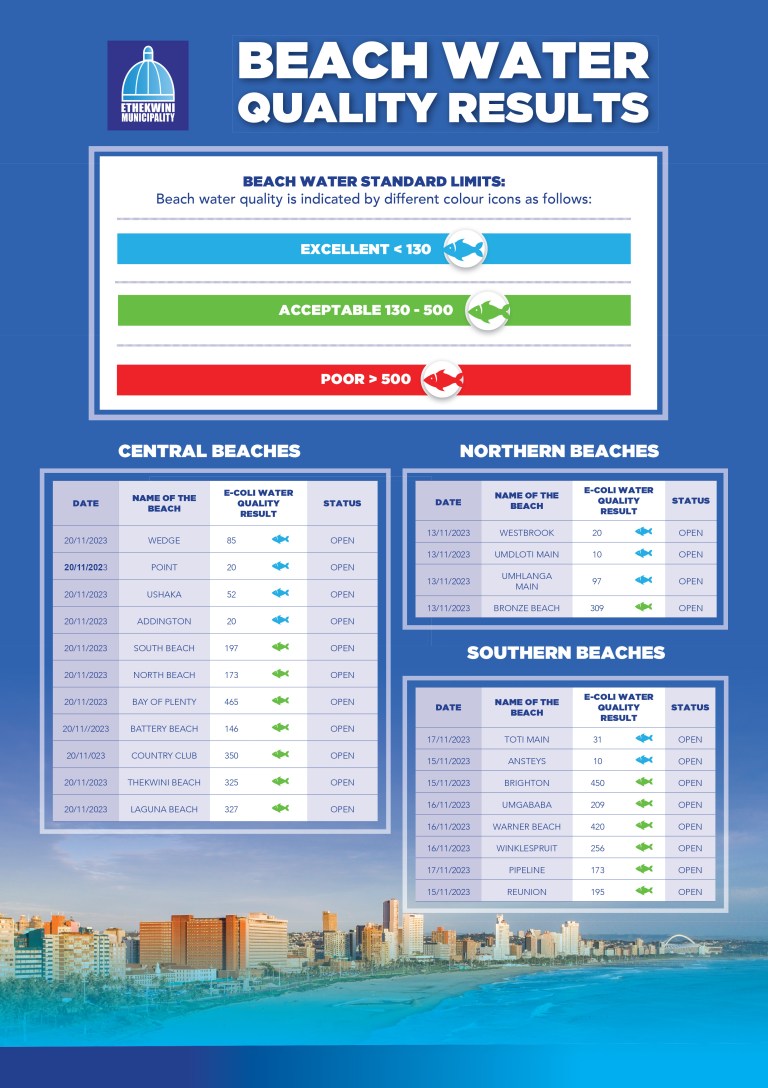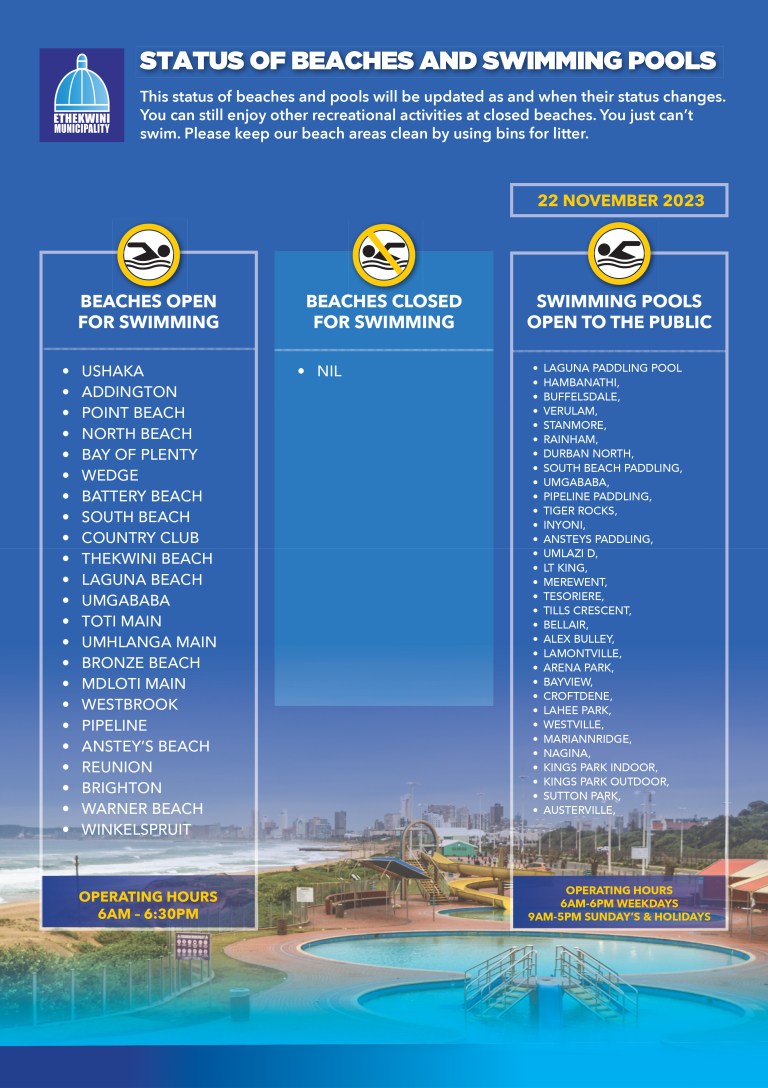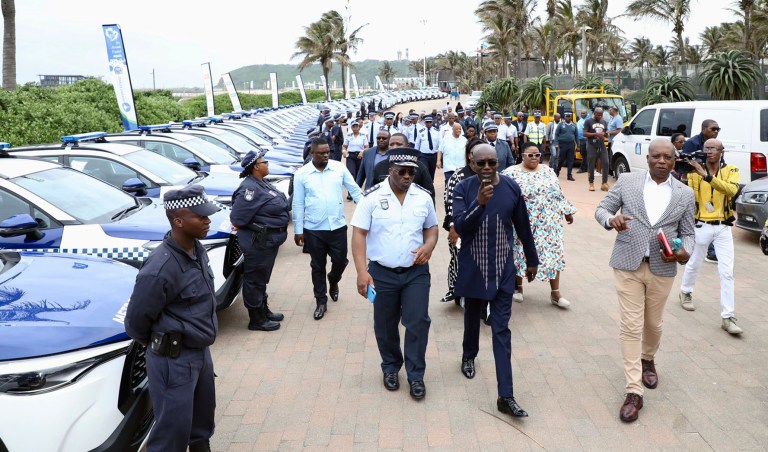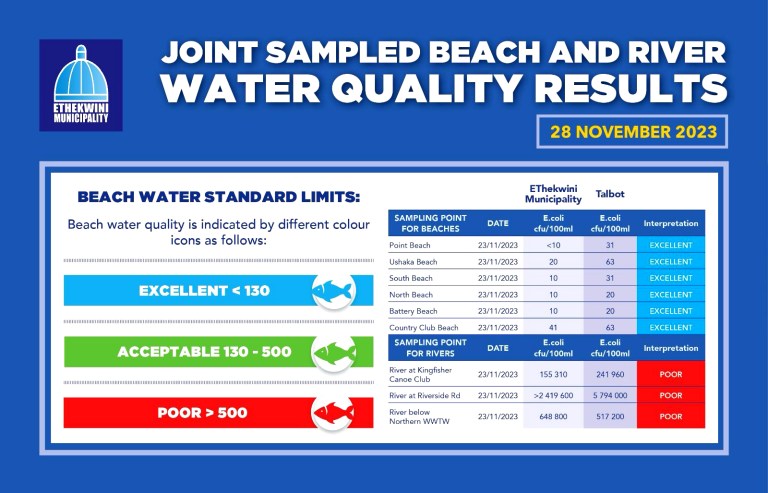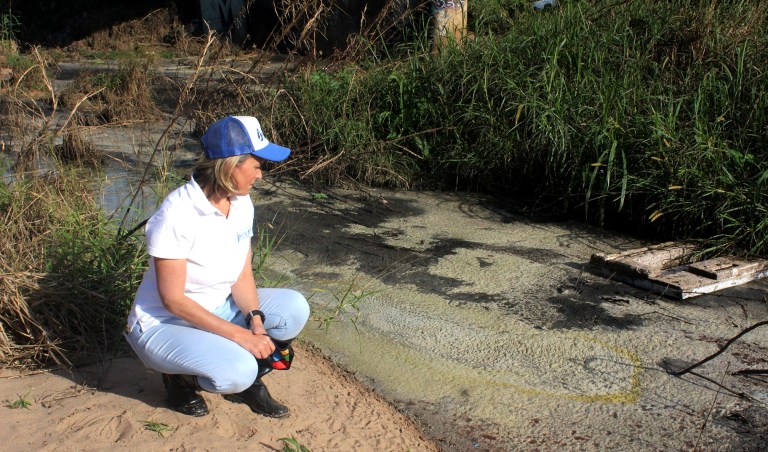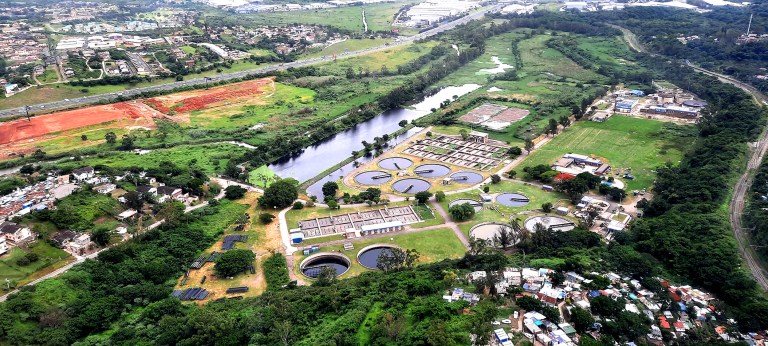Watchdogs call for criminal charges after UPL’s contaminated water pours into Durban river – again
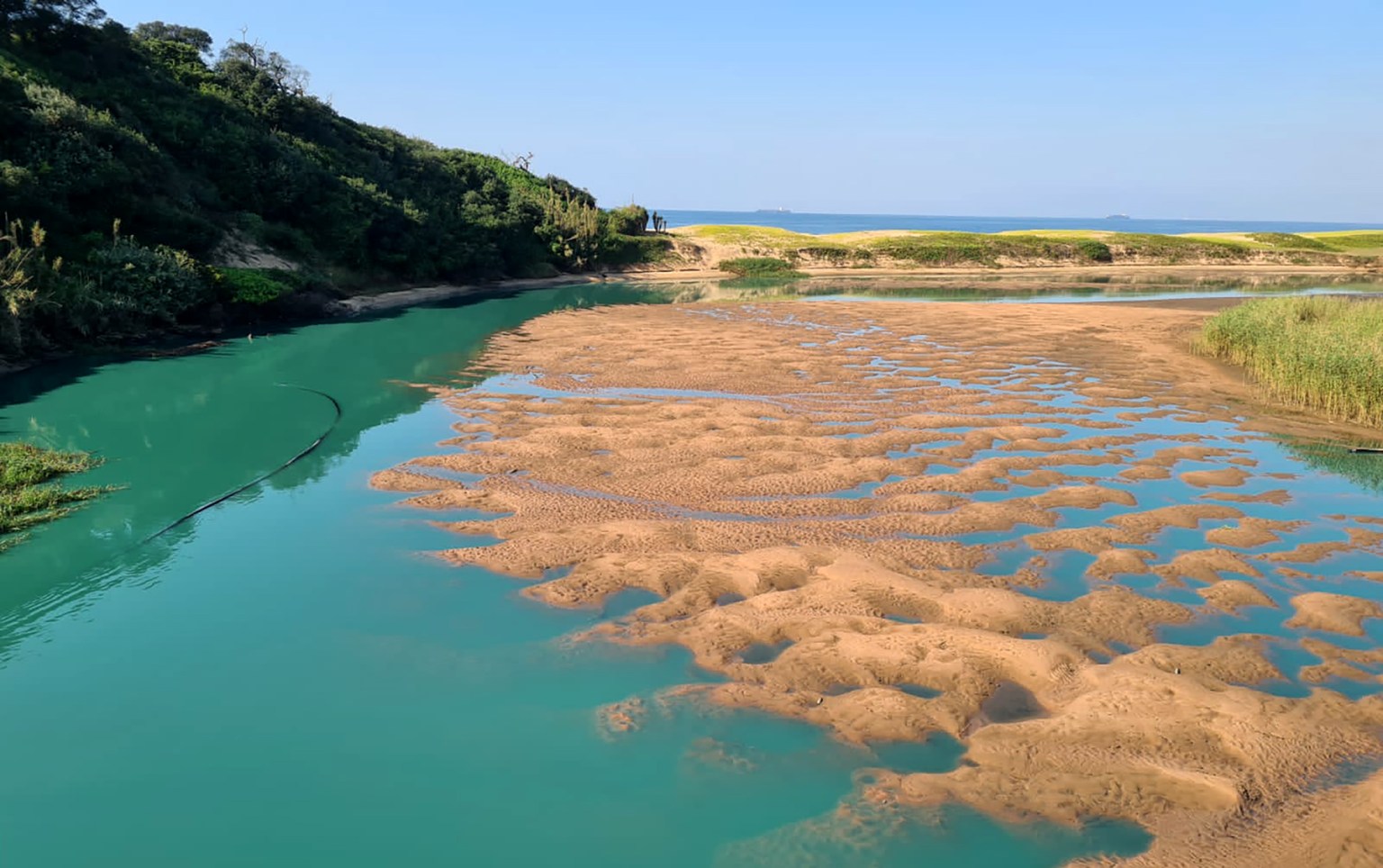 An image of the polluted Umhlanga lagoon in July 2021. (Photo: Supplied)
By Tony Carnie | 24 Oct 2023
An image of the polluted Umhlanga lagoon in July 2021. (Photo: Supplied)
By Tony Carnie | 24 Oct 2023
Toxic chemical residue from the old UPL warehouse has overflowed into the Ohlange River in Durban once more, just days after government authorities warned the company it faced criminal charges unless it acted swiftly to prevent further water and soil pollution in the area.
_____________________________________________________________________________________________________________________
In a written directive sent to UPL regional head Marcel Dreyer on 18 October, the Department of Water and Sanitation cautioned that, if convicted, company representatives could be jailed for five years for water pollution offences.
In the directive, titled
“Failure to take reasonable measures to contain or prevent a situation which causes pollution of the water resource”, senior water regulation official Colin Zwane said he had reasonable grounds for believing that UPL had contravened the provisions of the National Water Act by failing to take adequate steps to prevent pollution.
Zwane said one of the big worries was how to deal with thousands of litres of pesticide-contaminated water currently stored by UPL in a makeshift pollution control dam (PCD) located near the company’s fire-gutted warehouse in Cornubia.
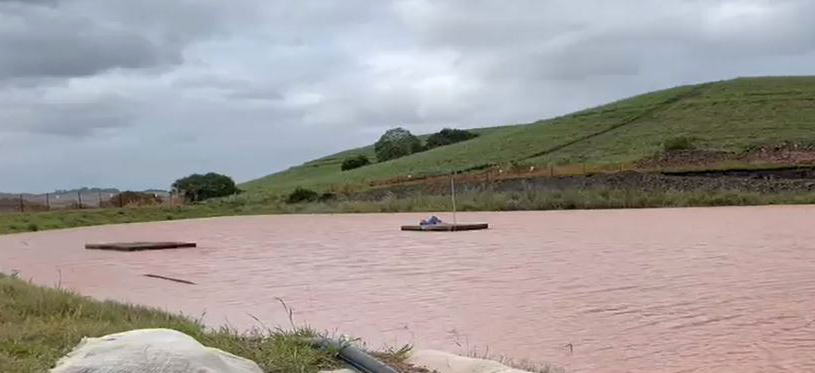 The ‘pollution control dam’ at Cornubia on 22 October. (Photo: Supplied)
The ‘pollution control dam’ at Cornubia on 22 October. (Photo: Supplied)
Just days after Zwane’s warning directive, however, treated and untreated water from this dam started to flow into a nearby stream during heavy rains over the weekend.
The same dam also overflowed into the Ohlange River after heavy rains in April 2022, and now questions are being raised once more on why UPL allowed the dam level to rise to the point where there was a risk of further pollution overflows.
Following the arson attack on the warehouse in July 2021, government officials instructed the company to ensure that dam water levels were kept below 30% of capacity, but this was revised to a maximum level of 60% last year at the request of UPL.
To ensure that this polluted stormwater did not flow out of the dam, UPL was required to hire tanker trucks to transport the poisoned water to a registered hazardous waste dump.
But UPL, the fifth-largest agrochemical company in the world, complained about the costs of taking the water to a land-based waste facility, and in late 2021 it submitted proposals to dump the water into the sea via the Southern Wastewater Treatment Works near Merebank.
That proposal was rejected and, more recently, UPL consultants proposed reducing the level of the pollution control dam by pre-treating the contaminated water with ozone and ultraviolet light processes and then releasing it into the sea via the Ohlange River.
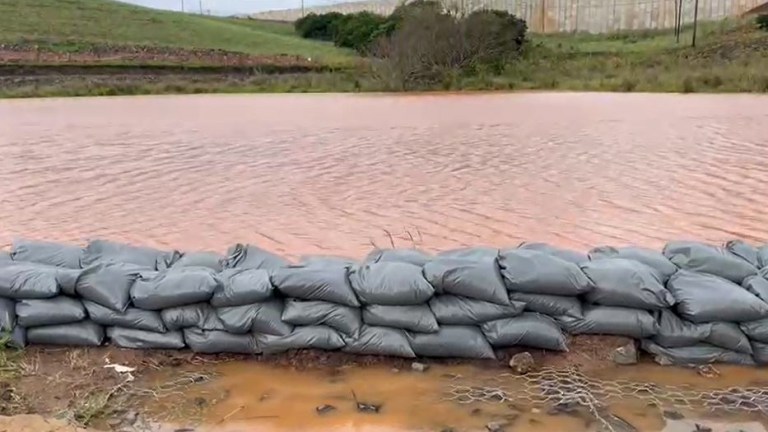 Though sandbags have been placed above the dam wall, water was still flowing beneath the sandbags via a porous layer of stones. (Photo: Supplied)
Though sandbags have been placed above the dam wall, water was still flowing beneath the sandbags via a porous layer of stones. (Photo: Supplied)
In response to the latest government directive, UPL attorney Norman Brauteseth has once again raised the issue of the high cost of tankering water to a landfill site, suggesting that this was no longer necessary as the water could be pre-treated to non-toxic levels and then discharged directly from the dam.
“As you are aware, our client has been tankering PCD water to landfill since the incident, at a cost of many hundreds of millions of rands,” he said, noting UPL was also required to keep the dam below 60% capacity.
“Demands have been made in the last week for UPL to recommence tankering to regain that level. The need to tanker is however now entirely redundant in the light of the non-toxic nature of the successful treatment,” he said, further suggesting that the eThekwini municipality had obstructed the company’s efforts to resolve the situation by refusing to grant landowner permission to discharge treated water onto land owned jointly by the municipality and the Tongaat-Hulett group.
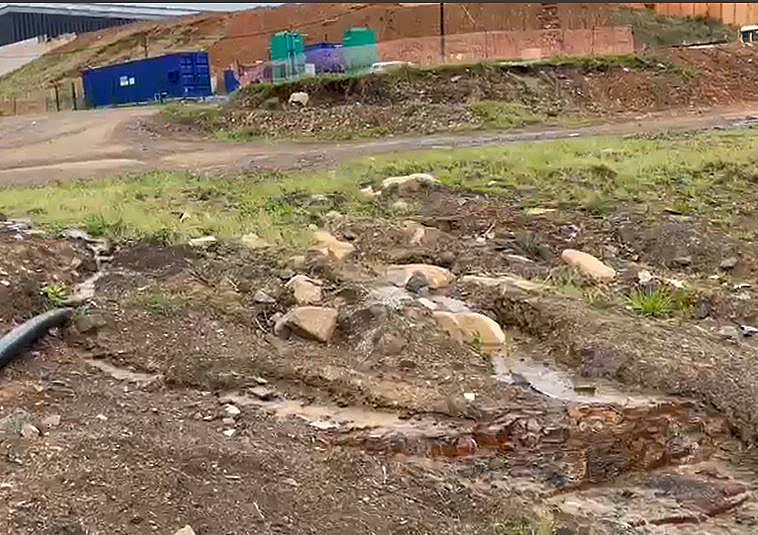 Contaminated water from the UPL ‘pollution control dam’ flows into a stream below the old UPL warehouse. (Photo: Supplied)
Contaminated water from the UPL ‘pollution control dam’ flows into a stream below the old UPL warehouse. (Photo: Supplied)
In his 20 October letter to the provincial department of environmental affairs and other senior government officials, Brauteseth said the level of the dam was now above 90% and, due to the risk of an overflow because of heavy rain, UPL had been advised by one of its environmental consultants (Dr Mark Graham of GroundTruth Environment and Engineering) that the dam level “must therefore be reduced on an expedited basis”.
“In the circumstances as set out above, and the fact that the treated PCD water is able to be discharged without licensing, UPL will no longer tanker clean water to landfill.
“It is able to be safely treated and discharged in situ, and UPL has accordingly today instructed its consultants to run the plant, discharge it in accordance with the submitted SOP [standard operating procedure] and EMP [environmental management plan] and lower the PCD level to 60%.”
However, UPL’s stance has enraged several community watchdogs who sit on the government-appointed Multi-Stakeholder Forum (MSF) to monitor the impacts of the Cornubia warehouse environmental disaster on behalf of local communities.
In a letter to the provincial department of environmental affairs official Sabelo Ngcobo, forum convenor Jeremy Ridl has requested an urgent meeting with senior national, provincial and local government officials this week to discuss what it considers to be “a crisis in the management” of the UPL disaster.
Noting that the last meeting between the MSF and UPL was cancelled because the agro-chemicals company would not allow Daily Maverick to sit in on the meeting, Ridl said forum members would no longer attend any meetings that were “controlled by UPL, both as to what information is disclosed and who may attend”.
It was unacceptable for information to be given to community representatives at a meeting and for them to be expected to keep such information confidential. This defeated the entire purpose of the MSF.
“Instead of there being communication between stakeholders and the authorities, and between stakeholders and UPL, stakeholders have been subjected to what may only be termed as an ‘information dump’ that is of no assistance to ordinary members of the public.”
The MSF has also called for an investigation into allegations that certain information about the UPL clean-up and rehabilitation process was being controlled or withheld from both the public and the authorities.
“The MSF is not aware of the true facts and requires a full investigation of the matter by the authorities and public disclosure of the findings.”
Turning to the overflow of polluted water from the UPL pollution control dam, Ridl said it appeared that the water release began late on Friday or early Saturday and continued into Sunday.
(Independently, Daily Maverick has seen imagery of untreated water flowing directly from the crest of the dam wall on Sunday.)
“The MSF has sight of the letter addressed to you by UPL’s attorney and the recommendations of GroundTruth,” said Ridl.
“… It is clear that UPL is proceeding on the advice of its attorney and the recommendations of its specialist, in blatant disregard of the section 30 directive and the directive issued by the Department of Water and Sanitation (DWS) only a few days ago.
“The MSF does not agree with UPL’s interpretation of the law when it contends that it does not need to comply with municipal stormwater by-laws or the National Water Act. In the case of the latter, the MSF was pleased to see the directive issued by DWS as it confirms the MSF’s understanding of the law,” said Ridl, who is also a senior environmental attorney.
“Many questions arise from what is obviously, the unlawful discharge of contaminated water into the watercourse. Monitoring the impact after the event, as suggested in [Brauteseth’s] letter and the GroundTruth recommendations, is unacceptable.
“Aside from the possible contravention of the section 30 directive and the DWS directive, the discharge of contaminated water into the watercourse without a water use licence or exemption is a criminal offence, as is the failure to comply with the municipal stormwater bylaws.
“The MSF has been disappointed that no prosecution has resulted from the incident and must assume that the authorities are unwilling or unable to progress with criminal action. The MSF will accordingly lodge a criminal complaint concerning the discharge currently taking place with SAPS.”
The MSF has also requested an urgent meeting with the provincial department of environmental affairs to discuss several issues and, if necessary, “to redefine the role and purpose of the MSF”, said Ridl, noting that it would be advisable for the provincial department of environmental affairs to have its legal advisers at this meeting.
Daily Maverick sent questions to UPL regional head Dreyer on Monday, asking the company to comment or elaborate on the latest events, but this request was not acknowledged.
Nevertheless, attorney Brauteseth has set out the company’s position in a detailed six-page letter to government authorities who sit on a Joint Operations Committee dealing with the Cornubia investigation.
Further to UPL’s concerns about the costs of tankering waste to landfill, Brauteseth’s letter also records the company’s understanding of recent events and how they should be dealt with.
Brauteseth states that UPL submitted a proposal to the provincial department of environmental affairs in November requesting permission to discharge wastewater into a stream flowing into the Ohlange River – after it had been treated with ozone and ultraviolet processes.
Conditional approval was granted in March, with the proviso that this discharge be licenced by the DWS. UPL had also proposed an “expedited” procedure be followed under a General Authorisation process, but the DWS required written landowner consent from both the eThekwini municipality and Tongaat-Hulett.
However, Tongaat was only prepared to provide consent on certain conditions, including approval in terms of eThekwini by-laws. In July, eThekwini responded, stipulating that UPL would have to obtain “unconditional” landowner consent from Tongaat.
“Quite clearly, those stipulations created an impasse,” said Brauteseth.
Despite several efforts to resolve this, including an application to allow an “emergency discharge” of treated water, the impasse had not been resolved.
As a further precaution, UPL also consulted and obtained a review report from Dr Sebastian Jooste, a senior official of the DWS.
He had advised that as test results from the UPL treatment process did “not appear to indicate any negative impact on the receiving environment”, the pre-treatment plant would be suitable to remove any “residual pesticide toxicity” prior to its discharge to the environment.
“In the result, the treated PCD water can be discharged to the adjacent stream without licensing,” Brauteseth asserted.
It was in these circumstances, he said, that UPL had decided to no longer tanker “clean water” to landfill as the water could be safely treated and discharged on-site. DM
Ethekwini Municipality responds
In reference to your article above, I wish to correct an allegation made by Mr Norman Brauteseth which suggests that eThekwini Municipality obstructed the company’s efforts to resolve the situation by refusing to grant landowner permission to discharge treated water onto land owned jointly by the municipality and the Tongaat-Hulett group.
The land upon which UPL proposed, and subsequently illegally discharged contaminated water, is owned by Tongaat Hulett Properties.
In terms of the eThekwini Municipality Stormwater Management Bylaws any discharge of contaminated stormwater must be approved by the municipality. In this regard UPL made application in terms of the Stormwater Management Bylaws and we furnished UPL with our requirements. (Read the full letter).
Tongaat Hulett were also served notice of the requirement to comply with the eThekwini Municipality Stormwater Management Bylaws [url=file:///C:/Users/utente/Documents/Africa%20Wild/-Letter-to-Tongaat-Hulett-Compliance-With-E-Muni-Stormwater-Management-Bylaws-22-April-2022.pdf](Read the letter) [/url]
No further information was provided to the municipality in order to assess and make a decision to approve or refuse this discharge. UPL subsequently wrote to eThekwini Municipality withdrawing their Stormwater Application on 20 October 2023.
Dr Andrew A Mather Pr Eng FSAICE MIMESA
UPL Incident Coordinator
eThekwini Municipality
Tongaat Hulett Developments (THD) responds
UPL proposed to discharge treated wastewater onto THD and Ethekwini Municipality (ETM) landholdings (not jointly owned land between the City and THD – the discharge will traverse THD land and then ETM land)
For UPL to discharge treated wastewater onto THD landholdings, the General Authorisation (GA) application with the Department of Water and Sanitation required landowner consent from THD, with THD in turn requiring approval from eThekwini Municipality in terms of its Stormwater Bylaws.
THD did not obstruct granting landowner permission to UPL for the discharge of treated wastewater. The agreed terms for THD providing landowner consent to UPL were unfortunately not adhered to. THD remains fully supportive and ready to provide the requisite landowner approvals, subject to eThekwini confirmation.
